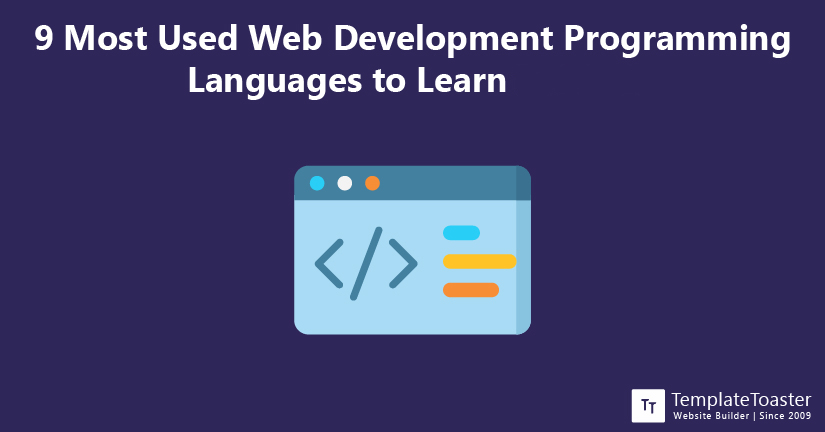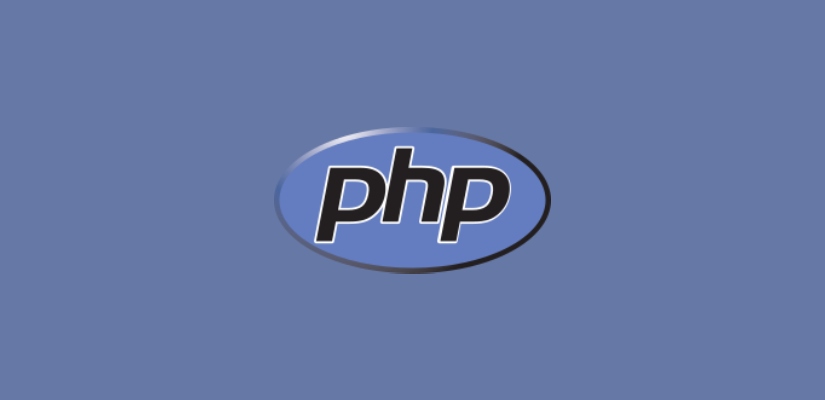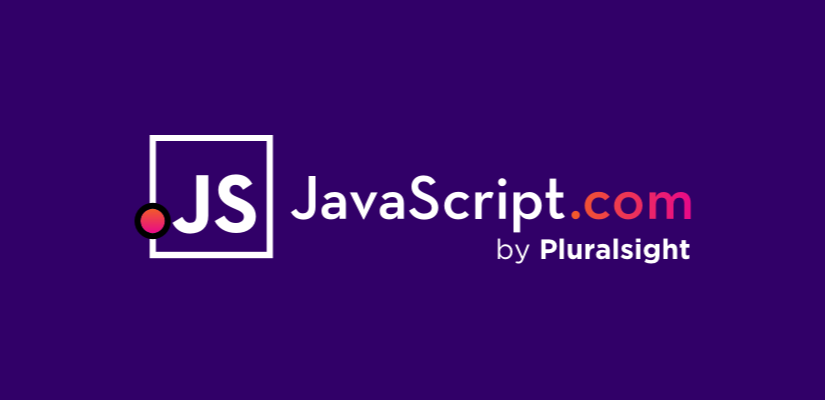Most Used Programming Languages for Web Development in 2023

Knowing about the most used web development programming languages can be really helpful for tech enthusiasts. With every passing day, something new comes in and at the same time, something goes obsolete. Thereby, the need to learn programming languages is increasing rapidly. No matter if you are an amateur web developer or seasoned professional, knowledge about programming languages can always be helpful. In this guide, I will show you the 9 most used web development programming languages to learn in 2023.
No matter if you are a mobile developer, web developer, application developer, or anybody involved in web technology. Learning and getting familiar with technology always helps. It opens up the new gates to creativity. There are thousands of programming languages that you can try your hands on. And each programming language is coupled with many useful and innovative aspects to give your piece of work a new and fresh look. However, when you dive a little deeper, you will see that not every language is the same.
With each new requirement, the role of language varies. The core understanding of any language will always help in making things simpler and effective. Undoubtedly, knowledge of multiple programming languages will always be beneficial for you. Each new project you wish to start or wish to create a website requires some prior knowledge of programming languages.
So, let’s look at the most used web development programming languages to learn. These will help you to stay updated and well-informed in the realm of programming languages.
Let’s examine the Most Used Web Development Programming Languages to Learn in 2023
PHP

PHP stands for Hypertext Preprocessor is a general-purpose scripting language best suited for web development. It was created by a Danish-Canadian programmer Rasmus Lerdorf in 1994. PHP is capable enough to handle just about any project. However, it is famous for creating server-side web applications. For all the dynamic projects, you won’t find any other better option than PHP. There are hundreds of PHP frameworks available in the market. On the other hand, it is really simple to learn PHP. You can use it to create web pages written in HTML. It is an amazingly simple, and beginner-friendly language.
Difficulty Level – Easy to learn.
Key Features of PHP
- It is an open-source scripting language.
- PHP is one of the best server-side web development programming languages.
- You will get an abundance of powerful frameworks to use.
- It has a low learning curve.
- PHP is a functional and object-oriented programming language.
- PHP is best suitable for creating data-heavy websites.
- It can be easily used for creating dynamic and attractive web pages.
- It comes with huge community support.
- PHP offers you a fabulous debugging facility with Xdebug.
- It includes amazing automation tools.
.
Pro Tip: If you want to build your website without learning any of these programming Languages, use TemplateToaster.
Python

Python was created by a Dutch programmer Guido van Rossum in the year 1991. And since then it is ruling the technical platforms and serving people for almost three decades now. It is one of the most popular web development programming languages. Also, for the fact that it is an open-source, dynamic programming language that is really easy to learn. The user-friendliness of this platform simplifies the process of structuring the desired web apps. That’s why it has become as an ideal solution for beginners, trying to create their space in the web development field. These days it is widely used for Artificial Intelligence and Machine Learning development.
Difficulty Level – Easy to learn.
Key Features of Python
- Python provides support for multiple platforms.
- It is object-oriented programming driven.
- It comes with a built-in whitespace indentation feature.
- With Python, you can build complex applications.
- Many big companies such as YouTube rely on Python.
- You will get numerous third-party plugins and libraries to work with.
- It is easy-to-use and easy-to-deploy Python.
- It provides you the ability to scale any complex application to whichever level you want.
- You get huge support libraries.
- It seamlessly integrates with other programming languages.
JavaScript

JavaScript often abbreviated as JS, is a powerful programming language that helps to make your website interactive. Placing JavaScript at the top of the list is what it deserves. The growth of JavaScript has never been anticipated. Also, it has given many front-end developers the opportunity to highlight their projects with ease. You can quickly create animations and other complicated designs with the help of JavaScript. For many reasons such as simplicity, flexibility, and reliability, it is famous as a developer’s language. And the popularity of JavaScript is not new.
Difficulty Level – Simple to learn.
Key features of JavaScript
- With the origin of the Node JS runtime, developers get the opportunity to use this language both in the backend as well as the frontend of the projects.
- It opens up new opportunities for every new development.
- JavaScript is a feature-rich, object-oriented scripting language.
- JavaScript is a client-side programming language.
- You can easily create interactive websites as it works perfectly with CSS and HTML.
- It is pretty simple to learn JavaScript.
- It is really easy to control and interact with JavaScript.
- You can choose any operating system to run JavaScript.
- It’s a high-level dynamic programming language.
- It’s an amazingly versatile solution out there.
Java

Java is a class-based, object-oriented programming language. It aims to come in contact with as few implementation dependencies as possible. Java helps you create server-side web applications. However, in the field of web development, Java has been in demand for several reasons. For instance, many of you must have played popular games such as Angry Bird, Candy Crush, and many more. All of these games are using Java web technology. So, even you can make use of Java and get started with your project today.
Difficulty Level – Moderate learning curve.
Key Features of Java
- Java is an open-source programming language.
- Java is a highly in-demand web technology nowadays.
- Because of its incredible stability and fast speed, Java has become the first choice for large enterprise-level web applications.
- Java is an amazingly powerful and robust solution available.
- It aims to be a loosely coupled programming language.
- Today, just about every Android application makes use of Java.
- It runs on the cloud seamlessly.
- You only have to complete it once, and then you are free to run everywhere you want.
- For all the heavily crowded websites, nothing can be better than Java.
- However, basic knowledge of HTML, CSS helps you run Java effortlessly.
C#

C# is developed by Microsoft in order to support its .Net framework. However, C# is an object-oriented programming language consisting of features and functionalities of both C and C++ platforms. All the server-side applications and other Windows software blindly rely on C#. C# has been used for several Microsoft applications and programs that were based on the .Net framework. It’s a beautiful yet powerful amalgamation of C++ and Java programming languages.
Difficulty Level – C# has a steep learning curve.
Key Features of C#
- C# is one of the top-rated multi-paradigm programming languages.
- It is a faster as well as a secured version of the C language.
- C# is a high-level programming language.
- It has an extremely crowded online community to offer you.
- You can easily create any cross-platform software with C#.
- It effortlessly supports iOS and Android development.
- C# offers you a large ecosystem of libraries and frameworks.
- It is an ideal choice when it comes to picking a solution for the Windows platform.
- It has the capability to work with shared codebases.
- Fully integrated with .Net libraries. So, you can relax.
C and C++

C and C++ have been two such languages that have been used for ages. And C++ has its roots in C. This is one of the most influential and no less than a backbone of software development. Many modern languages such as Java, C++, Python, etc. make use of the C language as their base. C language provides you excellent performance and speed, to begin with, your projects. Whereas, C++is an object-oriented programming language. C++ is used in graphic user interface development and other related creations.
Difficulty Level – Easy to learn.
Key features of C and C++
- Indeed, the C language is the fundamental foundation of many famous operating systems such as Windows, Linux, and OSX.
- C++ is an object-oriented programming language.
- C++ has been used in some or other forms to create simple to complex ecosystems.
- For almost everything, C++web applications, web developers rely on C++.
- C language offers you many easily accessible hidden or blocked objects.
- You will get numerous compilers and libraries to work with C++.
- Each program written in either C or C++ is easy to understand.
- There are plenty of application domains with C++.
- C is the simplest language of all.
- Debugging, testing and maintenance is not an issue with C and C++.
Ruby

Ruby is a dynamic, open-source programming language available out there. It was designed and developed in the mid-90s by Japanese computer scientist Yukihiro ‘Matz’ Matsumoto. Ruby is a dynamic object-oriented programming language, you can say more like Python. Many of Ruby’s aspects are quite similar to that of the Python programming language. It is a popular and beginner-friendly platform to work on. You would find all the necessary elements with Ruby for your web development.
Difficulty Level – Easy to learn.
Key Features of Ruby
- Ruby doesn’t involve much coding.
- It has a large web development community to be a part of.
- Ruby offers you high flexibility in terms of functionality.
- It comes with a considerably smaller coding size.
- The web development framework of Ruby i.e. Ruby on Rails is the most disruptive server-side web development framework out there.
- It provides you excellent tooling support.
- It is an easy-to-use programming language.
- Ruby is an open-source programming language.
- Using fewer lines of code, you can build an application.
Bonus, although the following are not programming languages. But, as a web developer one must get familiar with them too.
HTML

HTML is defined as Hypertext Markup language. It enables you to create and structure your web pages and applications smoothly. However, it is not a programming language but it includes some powerful features and functionalities that allow you to add a dynamic quality to your web pages. It is incredibly easy to learn and use. HTML is constantly evolving and offering you various useful and practical solutions to establish something out-of-the-box projects. Basically, HTML is a method with the help of which you actually move around on the web. In a layman’s language, we can say HTML is the skeleton of your website, holding things together. So, knowledge of HTML is the fundamental requirement for web development.
CSS

CSS stands for Cascading Style Sheets, is a simple design language that simplifies the process of web page designing. It lets you create appealing web pages to attract visitors to your website. CSS is basically a rule-based language. Once you define a set of rules that specify a group of styles to be applied to the elements present on your web page. In order to manage the feel and appeal of your web pages, CSS needs to be handled properly. HTML and CSS both are the absolute basic grounds of starting any web application. And every web developer should know these two important aspects of web development.
XML

XML refers to Extensible Markup Language. It comes with some predefined set of rules for encoding a document that is both machine-readable as well as human-readable. Simplicity and usability are the two main components of XML. It allows you to create your own self-descriptive tags or language for better understanding as per your project needs and requirements. It is highly extensible. However, it contains data rather than the ability to present it. XML permits you to store data irrespective of how it will be presented.
Web Development Programming Languages to Learn – In Conclusion
It doesn’t matter which language you pick, it requires time and practice to become an expert. There are plenty of things associated with each programming language. And these things make you an expert. You need to get familiar with little things and make your concept clear and strong. Someone has rightly said that well begun, is half done. So, if you are still not sure about your programming skills, it is the right time to start learning. There’s no time like now, to start doing anything you want. Irrespective of your current skill set, you still can learn any language you want, the only requirement is dedication and zeal.
However, the type of software or application you want to create can influence the choice of the programming language you should learn. There are multiple languages that you can learn but languages such as PHP, Python, JavaScript, Java, C++, C#, C, and more are the most widely used languages in the ever-growing IT industry today. So, which language are you planning to learn? Or which language you have expertise in, do let me know in the comment section below.
Build a Stunning Website in Minutes with TemplateToaster Website Builder
Create Your Own Website Now